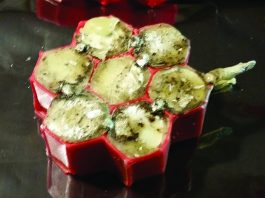A team of Japanese researchers have successfully performed hydroxide ion conductivity, potentially advancing anion exchange membrane fuel cell technology.
The research, led by the Japan Advanced Institute of Science and Technology (JAIST), has effectively demonstrated hydroxide ion conductivity and the amount of water contained in the sample for the first time, without exposing the thin film sample to air, with this discovery possibly enhancing the performance of the next generation of fuel cell technology.
The study is published in ChemSusChem.
Decarbonisation is currently increasing exponentially worldwide, subsequently meaning that fuel cells can provide higher electrical efficiency compared to commonly used power generating systems. Anion exchange membrane fuel cells boast a multitude of benefits that make them superior to proton exchange membrane fuel cells, this being due to their utilisation of non-precious metal catalysts.
Despite being more efficient in theory, making them commercially applicable is particularly challenging. The most significant barrier between attaining the next generation of fuel cell technology is achieving hydroxide ion conductivity in the ion-conductive polymer that envelops the electrode catalyst.
This is problematic because the hydroxide ion – which is the carrier – reacts extremely readily with carbon dioxide in the air, making the examination of the hydroxide ion conductivity at the electrode interface extremely difficult. In order to eliminate this problem, all of the evaluation devices for the study were enhanced to eliminate the chance of the sample being exposed to the air.
The team synthesised fluorine-based cationic polymers with Br and OH counter anion samples prepared for comparison for their investigation. The results demonstrated that the 270-nm-thick thin film containing hydroxide ions exhibits a high hydroxide ion conductivity of 0.05 S cm-1, meaning that its ionic conductivity was double the value expressed by the thin film containing Br ions.
Furthermore, the researchers discovered that the thin film form comprised of hydroxide ions was similar to the thick membrane form; however, this is different from the results collated from proton conductive polymers.
Yuki Nagao, an associate professor from JAIST, said: “Developing a better understanding of these properties and their impacts on hydroxide ion conduction will be important for both clarifying hydroxide ion conduction mechanisms and improving fuel cell performance.”









